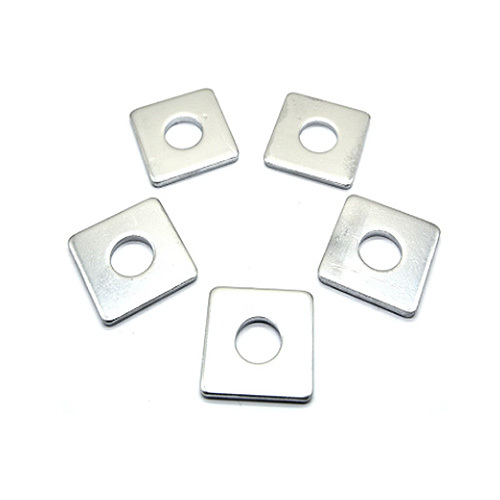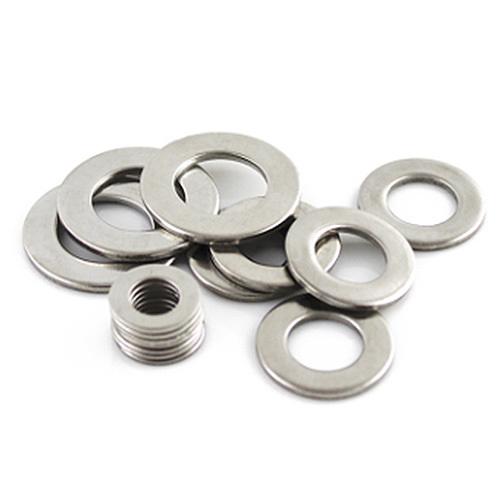Understanding the Benefits of Knurling Disc Springs in Industrial Applications
2025-07-01
Understanding the Benefits of Knurling Disc Springs in Industrial Applications
Table of Contents
1. Introduction to Knurling Disc Springs
2. What Are Knurling Disc Springs?
3. How Knurling Enhances Performance
4. Applications of Knurling Disc Springs in Industry
5. Advantages of Knurling Disc Springs
6. Materials and Manufacturing Processes
7. Design Considerations for
Understanding the Benefits of Knurling Disc Springs in Industrial Applications
Table of Contents
- 1. Introduction to Knurling Disc Springs
- 2. What Are Knurling Disc Springs?
- 3. How Knurling Enhances Performance
- 4. Applications of Knurling Disc Springs in Industry
- 5. Advantages of Knurling Disc Springs
- 6. Materials and Manufacturing Processes
- 7. Design Considerations for Knurling Disc Springs
- 8. Maintenance and Durability of Knurling Disc Springs
- 9. Conclusion
- 10. FAQs
1. Introduction to Knurling Disc Springs
In the realm of industrial applications, **knurling disc springs** have carved out a niche due to their unique design and multifunctionality. Understanding the intricacies of these components is crucial for manufacturers, engineers, and designers aiming to enhance their operations. This article explores the various benefits of knurling disc springs, elucidating why they are indispensable in modern industrial setups.
2. What Are Knurling Disc Springs?
Knurling disc springs, often known as **conical disc springs**, are a type of spring designed to provide high levels of force in a compact form. They are characterized by their conical shape, which enables them to compress and expand effectively without occupying excessive space. The knurling process involves creating a textured pattern on the surface of the spring, which improves friction and grip during operation. This feature makes them particularly useful in applications where stability and reliability are paramount.
3. How Knurling Enhances Performance
The knurling on disc springs serves several functions that significantly enhance their performance:
3.1 Improved Friction
The textured surface created by knurling increases the friction between the spring and the components it interfaces with. This improved grip helps maintain the spring's position under load, reducing slippage and enhancing overall performance.
3.2 Better Load Distribution
Knurling also aids in distributing loads evenly across the surface of the spring. This feature minimizes wear and tear, prolonging the lifespan of both the spring and the components it interacts with.
3.3 Enhanced Energy Absorption
The conical shape, combined with the knurling, allows for superior energy absorption. These springs can withstand shock loads and vibrations, making them ideal for applications exposed to dynamic forces.
4. Applications of Knurling Disc Springs in Industry
Knurling disc springs find applications across a variety of industrial sectors due to their versatility and reliability. Here are some notable applications:
4.1 Automotive Industry
In the automotive sector, knurling disc springs are crucial in systems requiring precise force control, such as clutches and brakes. Their ability to handle high loads and resist wear makes them suitable for critical safety components.
4.2 Aerospace Engineering
The aerospace industry demands components that can perform under extreme conditions. Knurling disc springs are used in landing gear systems and various flight control mechanisms, where reliability and lightweight designs are essential.
4.3 Machinery and Equipment
In manufacturing machinery, knurling disc springs play a vital role in providing tension and stability. They are often found in conveyor systems, compressors, and other heavy-duty equipment.
4.4 Electronics
In the electronics sector, these springs provide reliable performance in switches and connectors. Their compact nature allows for integration into small devices without compromising functionality.
5. Advantages of Knurling Disc Springs
The benefits of using knurling disc springs extend beyond their functional capabilities. Here are some key advantages:
5.1 Space Efficiency
Knurling disc springs are designed to be compact, allowing for space-efficient designs in various applications. This is particularly beneficial in industries where space is at a premium.
5.2 Cost-Effectiveness
Due to their durability and performance, knurling disc springs reduce the need for frequent replacements, thereby lowering long-term operational costs. Their efficient energy absorption also leads to less wear on associated components, providing further cost savings.
5.3 Customization
Manufacturers can customize knurling disc springs to meet specific application requirements. Variations in size, shape, and material allow for tailored solutions that enhance performance in niche applications.
6. Materials and Manufacturing Processes
The effectiveness of knurling disc springs largely depends on the materials used and the manufacturing processes involved.
6.1 Common Materials
Typically, knurling disc springs are made from high-quality steel alloys that offer high tensile strength and fatigue resistance. Additionally, some applications may utilize materials such as stainless steel or titanium for enhanced corrosion resistance.
6.2 Manufacturing Techniques
The manufacturing process of knurling disc springs involves precision engineering techniques. These include:
- **Cold forming**: This method allows for the precise shaping of the spring without altering the material's properties.
- **Heat treatment**: This is applied to enhance the strength and elasticity of the spring.
- **Knurling**: This final step creates the textured pattern that provides additional grip and friction.
7. Design Considerations for Knurling Disc Springs
When designing knurling disc springs, several factors must be taken into account to ensure optimal performance:
7.1 Load Requirements
Understanding the specific load requirements is crucial. Engineers must analyze the maximum and minimum loads the spring will encounter to choose the right specifications.
7.2 Environmental Conditions
Factors such as temperature, humidity, and exposure to chemicals can affect spring performance. Selecting materials that can withstand these conditions is essential for longevity.
7.3 Size and Space Constraints
The compact nature of knurling disc springs makes them suitable for tight spaces, but proper sizing is still critical. Engineers must ensure that the springs fit within the intended application without compromising functionality.
8. Maintenance and Durability of Knurling Disc Springs
Maintaining knurling disc springs is relatively straightforward, yet it is essential for ensuring long-term performance.
8.1 Regular Inspections
Conducting regular inspections can help identify wear and tear early, preventing potential failures. Look for signs of deformation, cracking, or corrosion.
8.2 Lubrication
While knurling disc springs are designed for durability, proper lubrication can further enhance their performance, reduce friction, and prolong their lifespan.
9. Conclusion
In summary, knurling disc springs offer numerous benefits that make them essential in various industrial applications. Their unique design, improved friction, and ability to absorb energy effectively contribute to their widespread use across sectors such as automotive, aerospace, and electronics. By understanding the advantages, materials, and design considerations associated with these springs, manufacturers can make informed choices that enhance operational efficiency, reliability, and cost-effectiveness.
10. FAQs
1. What are knurling disc springs used for?
Knurling disc springs are primarily used in applications requiring high load capacity, precise force control, and durability, such as automotive, aerospace, and manufacturing machinery.
2. How does knurling affect the performance of disc springs?
Knurling enhances the frictional grip and load distribution of disc springs, improving their stability and energy absorption capabilities.
3. Can knurling disc springs be customized?
Yes, manufacturers can customize knurling disc springs in terms of size, shape, and material to suit specific application needs.
4. What materials are commonly used for knurling disc springs?
High-quality steel alloys, stainless steel, and titanium are commonly used due to their strength, fatigue resistance, and corrosion resistance.
5. How do I maintain knurling disc springs?
Regular inspections, monitoring for signs of wear or damage, and ensuring proper lubrication can help maintain the performance and longevity of knurling disc springs.
Keywords:
Hot Products
Related news
Everything You Need to Know About DIN 6795 Grounding Washers
Explore the significance of DIN 6795 Grounding Washers in electrical safety and performance.
2025-08-16
Electroplated zinc square washer
YOTO WASHER FASTENER is one of the leading China electroplated zinc square washer manufacturers, offering OEM services, wholesale supply, and customized solutions at competitive prices.
2025-07-29
Why Choose Thickened Washers for Your Next Project? Unlocking the Benefits and Applications
Why Choose Thickened Washers for Your Next Project?
Understanding Thickened Washers: An Introduction
When it comes to fastening components in various industrial applications, thickened washers stand out as a critical element. These washers, characterized by their increased thickness compared to standard washers, provide enhanced support and stability for fasteners. Understanding their unique prope
2025-07-19














